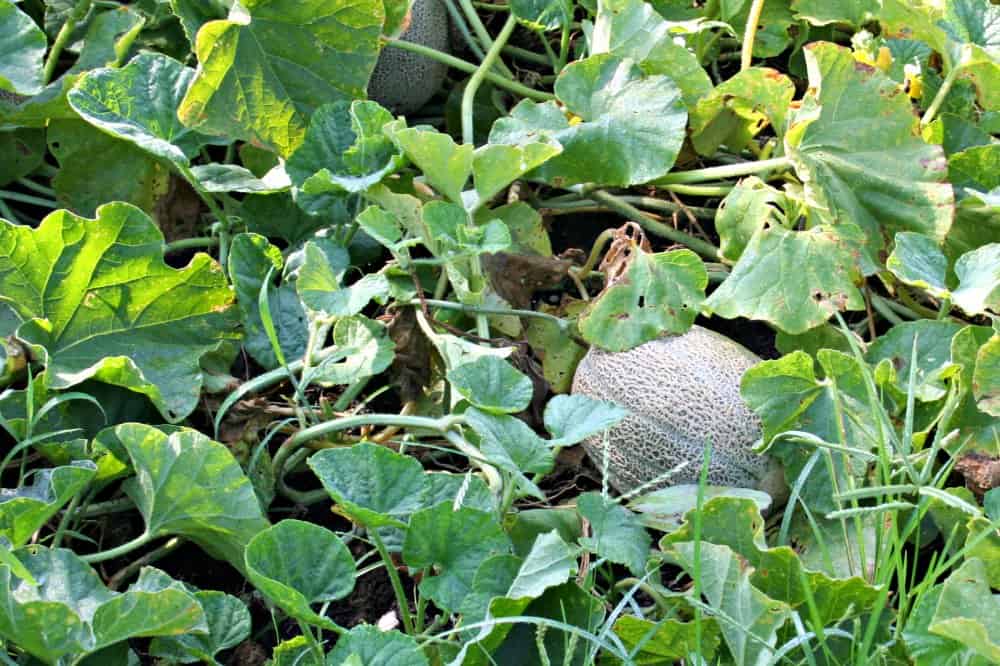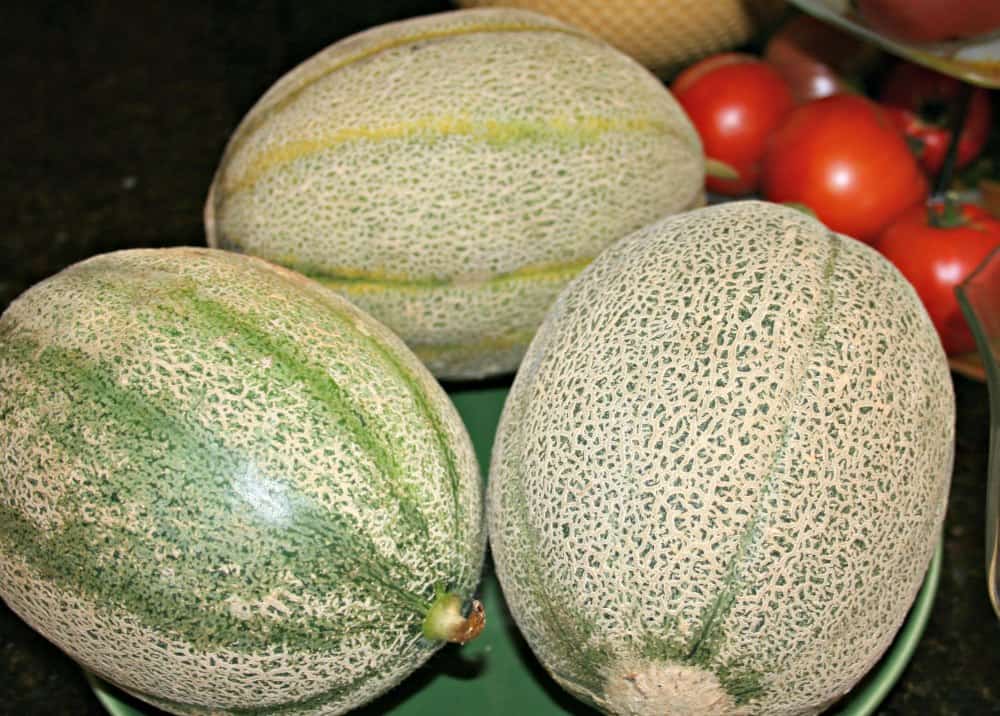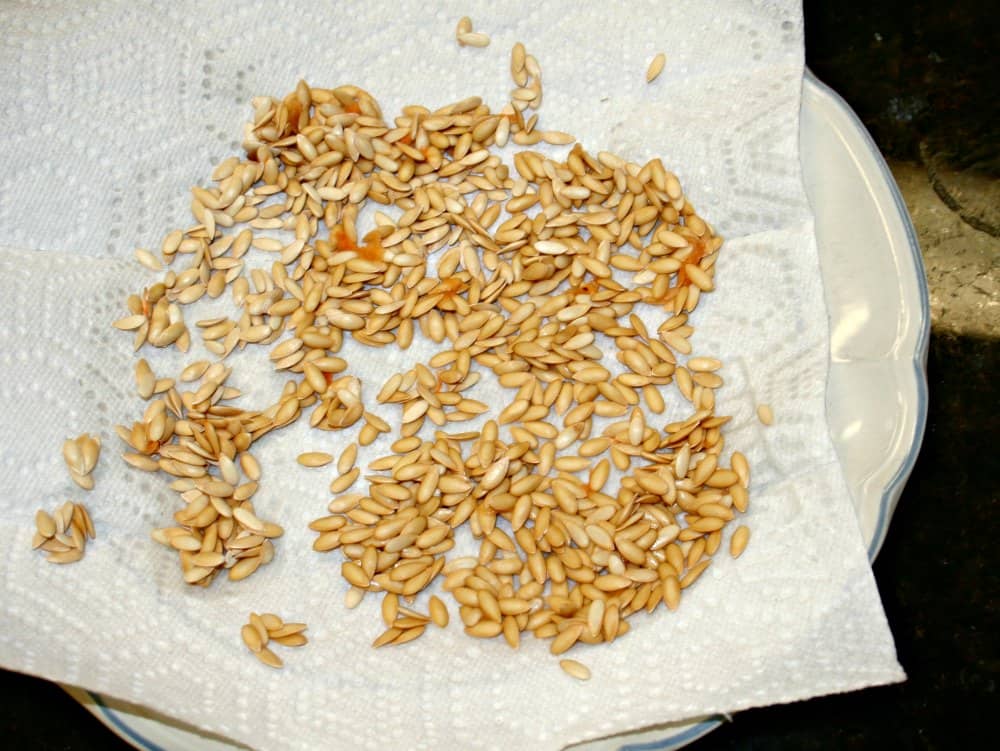Saving cantaloupe seeds and the seeds of its near relation, muskmelon, is a great project for people new to seed starting. The seeds are plentiful and easy to find inside the ripe fruit.
But not all cantaloupes produce viable seeds. This project works best with home-grown melon. Many commercial melon varieties are hybrids, produced by crossing two strains. The resulting fruits may be tasty, but the seeds may be sterile. Heirloom or old-fashioned varieties are usually best to collect seeds from – and it’s satisfying to grow your own.

Saving Cantaloupe Seeds
Cantaloupes, or muskmelons, are an ancient fruit. The Egyptians grew them with records indicating their existence as far back as 2,400 B.C.
The melons we know and love are called North American Cantaloupes or Cucumis melo reticulatus are muskmelons descended from Persian melons.
Cantaloupes can be pollinated by the wind or by insects like bees. They easily cross with other melon varieties. This means that if you are growing more than one variety in the home garden, the seeds of the resulting fruit may not be pure cantaloupes; if you grow them, you may get a surprise (often, a lousy tasting one).
If you plant to grow cantaloupes for seed saving projects, the best way to grow them is by themselves far from any other gardens with melons. Not easy in a suburban or urban environment but a necessity to ensure pure seeds.

Saving Cantaloupe Seeds, Step by Step
- First, choose the very ripest melon you can find. It should be yellow all around or have a large yellow spot. You should be able to smell a sweet cantaloupe smell from the shell.
- Cut the melon open. Inside, there is a central cavity with seeds and a fleshy netting.
- Scoop the seeds and netting into a colander in the sink. Cut up the rest of the melon to enjoy, and of course, add the rinds to your compost pile.
- Run the seeds and netting under cool water for several minutes. I use my hands to gently pry the seeds out of the interior netting. Sometimes I have to pick off excess cantaloupe flesh from the seeds. If too much flesh sticks to the seeds, throw the seeds and bits of cantaloupe out.
- Let the rinsed seeds air dry in the colander or drip dry for an hour or two. Run your fingers through them or stir them occasionally to allow additional water to drain off.
- Spread the rinsed, dry, clean seeds on a paper towel spread out on a plate or tray. Place the seeds in a cool, dark, very dry environment.

Once dried out properly, store in paper envelopes marked with the variety and type of seed. They should be viable for up to three years. You can conduct a seed viability test if you are unsure.
Problems with Saved Seed Germination? It May Be the Melon
Saving melon seeds is fun but a word of caution; store bought melon seeds may or may not yield an identical variety to that melon you loved from the supermarket. Because such fruits are grown for commercial trade and not for seed saving, they may be grown along with other melons, and the fruit may have seeds containing a peculiar genetic mix. The resulting melons may or may not taste anything like the parents.
You’re better off purchasing good quality seeds from a reputable grower or saving your own from a home garden where you know the plants and how far away the nearest melon patch is to your garden.




